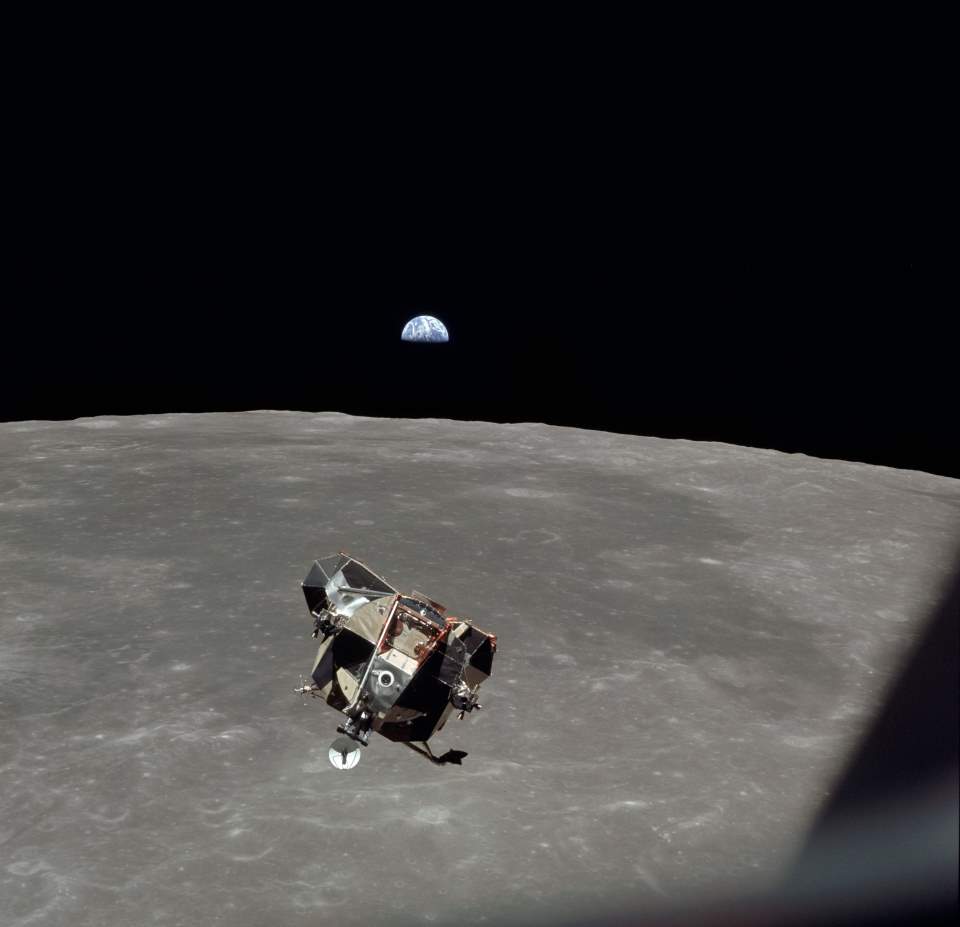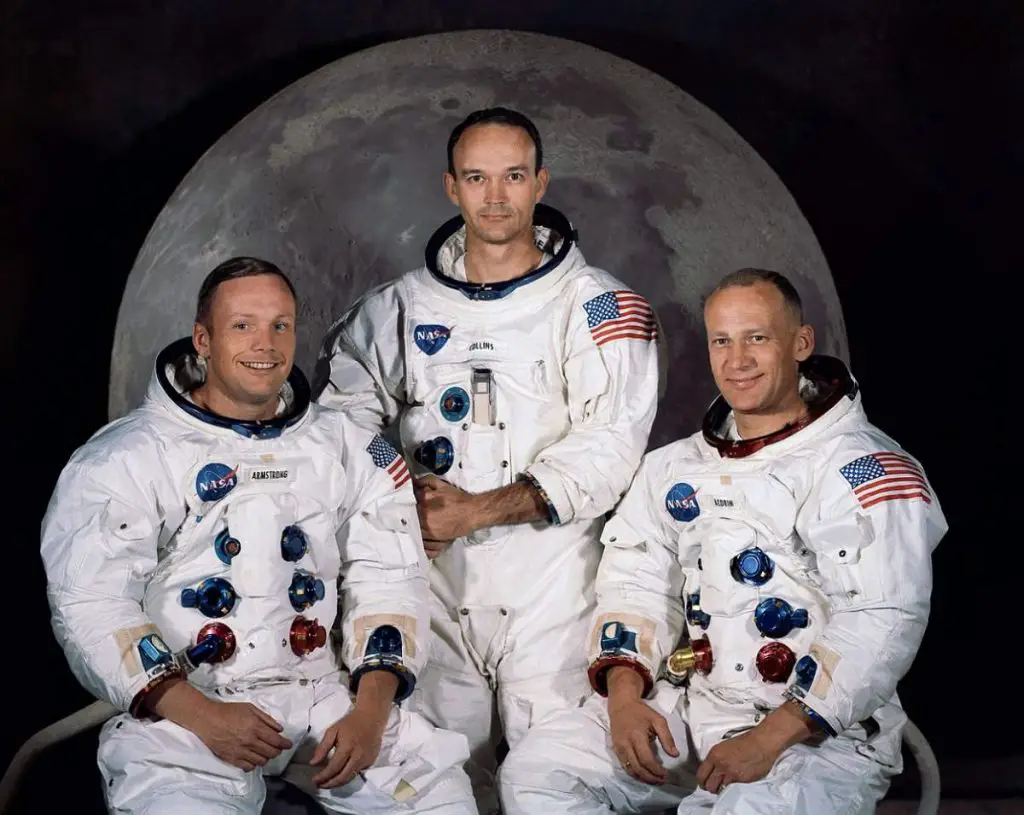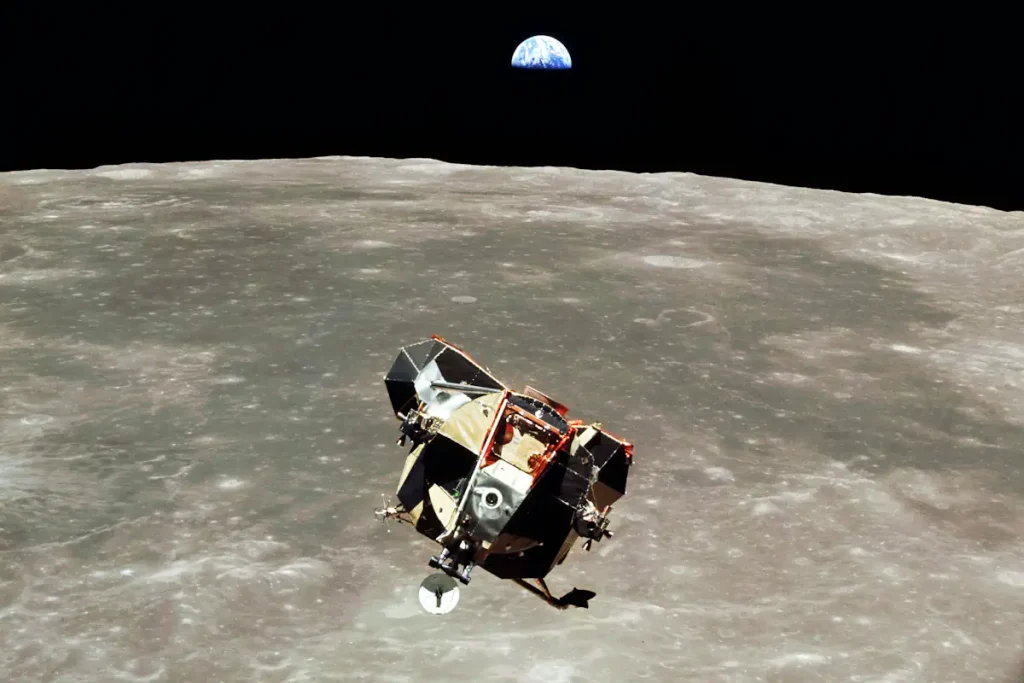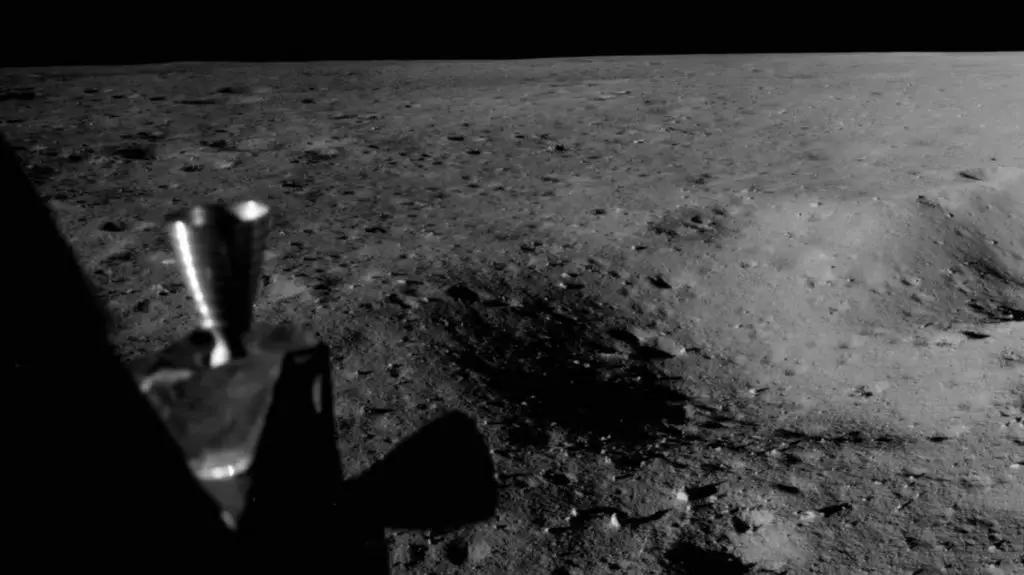A beautiful photo from the Moon’s orbit – Apollo 11 Lunar Module ascent stage photographed from Command Module by Michael Collins on July 21, 1969.
It has been said that Michael Collins is the only human, dead or alive, to not in the frame of this picture.

AS11-44-6642 (21 July 1969) — The Apollo 11 Lunar Module ascent stage, with astronauts Neil A. Armstrong and Edwin E. Aldrin Jr. aboard, is photographed from the Command and Service Modules (CSM) during rendezvous in lunar orbit. The Lunar Module (LM) was making its docking approach to the CSM.
Astronaut Michael Collins remained with the CSM in lunar orbit while the other two crewmen explored the lunar surface. The large, dark-colored area in the background is Smyth’s Sea, centered at 85 degrees east longitude and 2 degrees south latitude on the lunar surface (nearside). This view looks west. The Earth rises above the lunar horizon.
Michael Collins

Michael Collins (born October 31, 1930) was the Command Module Pilot (see notes 1) for Apollo 11, the spaceflight that landed the first two people on the Moon. While he stayed in orbit around the Moon, Neil Armstrong and Buzz Aldrin left in the lunar module to make the first crewed landing on the Moon’s surface.
It was his second and last spaceflight. His first spaceflight was on Gemini 10, in which he and Command Pilot John Young performed orbital rendezvous with two different spacecraft and undertook two extravehicular activities (EVAs, also known as spacewalks).
Prior to becoming an astronaut, he graduated from the United States Military Academy, and from there he joined the United States Air Force and flew F-86 Sabre fighters at Chambley-Bussieres Air Base. He was accepted to the U.S. Air Force Experimental Flight Test Pilot School at Edwards Air Force Base in 1960. He unsuccessfully applied for the second astronaut group but was accepted for the third.
After retiring from NASA in 1970, Michael Collins took a job in the Department of State as Assistant Secretary of State for Public Affairs. A year later, he became the director of the National Air and Space Museum and held this position until 1978, when he stepped down to become undersecretary of the Smithsonian Institution. In 1980, he took a job as vice president of LTV Aerospace. Collins resigned in 1985 to start his own consulting firm.

Notes
- The Apollo spacecraft had three parts: a command module (CM) with a cabin for the three astronauts, and the only part that returned to Earth; a service module (SM), which supported the command module with propulsion, electrical power, oxygen, and water; and a lunar module (LM) that had two stages – a descent stage for landing on the Moon, and an ascent stage to place the astronauts back into lunar orbit.
Sources
- Michael Collins on Wikipedia
- Apollo 11 on Wikipedia
- How Many Elephants are Left in the World in 2025? - August 17, 2025
- Moon Landings: All-Time List [1966-2025] - February 2, 2025
- What Is Max-Q and Why Is It Important During Rocket Launches? - January 16, 2025

